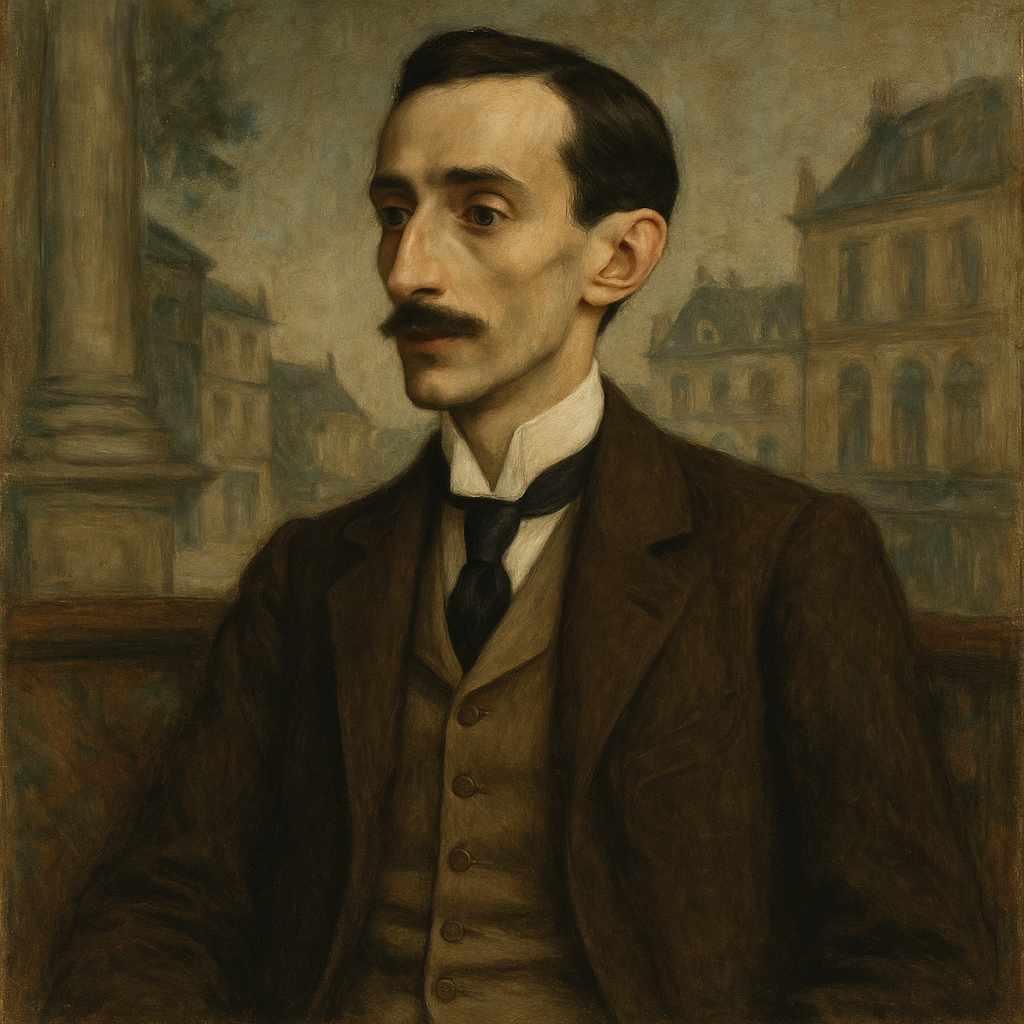The Cuckoo Sings (French)
Paul-Jean Toulet
1867 to 1920

Le coucou chante
Le coucou chante au bois qui dort.
L’aurore est rouge encore,
Et le vieux paon qu’Iris décore
Jette au loin son cri d’or.
Les colombes de ma cousine
Pleurent comme une enfant.
Le dindon roue en s’esclaffant :
Il court à la cuisine.
Paul-Jean Toulet's The Cuckoo Sings
Paul-Jean Toulet’s poem "Le coucou chante" is a delicate, impressionistic portrayal of a rustic morning scene. Toulet, a French poet known for his “Contrerimes” and sensitivity to form, often combines subtle imagery with musicality, creating works that feel both meticulously crafted and naturally expressive. In this brief yet rich poem, Toulet evokes a rural atmosphere through concise and vivid descriptions of birds and animals, underscoring the natural beauty and humor found in ordinary moments.
Structure and Form
This poem consists of two quatrains with an ABBA rhyme scheme, a structure that provides balance and musicality. Each stanza focuses on different elements of the morning scene, blending natural and domestic imagery. Toulet’s verse is fluid yet restrained, showing his hallmark “contrerime” style, which mixes conventional and unconventional rhyming, enhancing the poem’s rhythmic quality while adhering to a seemingly traditional structure.
Stanza-by-Stanza Analysis
First Stanza
"Le coucou chante au bois qui dort.
L’aurore est rouge encore,
Et le vieux paon qu’Iris décore
Jette au loin son cri d’or."
The poem opens with the line, “Le coucou chante au bois qui dort” (“The cuckoo sings in the sleeping woods”). Here, the cuckoo symbolizes the beginning of morning, with its song signaling the transition from night to dawn. The word “dort” (sleeps) attributes a peaceful, almost enchanted quality to the forest, suggesting a slumbering world about to awaken.
In the second line, “L’aurore est rouge encore” (“The dawn is still red”), Toulet introduces a visual element, blending color and time. The dawn’s redness alludes to the intensity and beauty of the early morning, a fleeting moment still “rouge” (red) before daylight fully arrives. This line has a layered effect, presenting dawn as both a physical phenomenon and a symbol of ephemeral beauty.
The third line introduces another bird, “le vieux paon” (“the old peacock”), described as “qu’Iris décore” (“decorated by Iris”), an allusion to the Greek goddess of the rainbow, symbolizing beauty and color. The peacock’s cry is depicted as “cri d’or” (“golden cry”), blending auditory and visual imagery to emphasize its exotic, almost royal presence. This phrase “cri d’or” hints at opulence and refinement within the natural setting, evoking the uniqueness of the peacock’s call amid the rustic environment.
Second Stanza
"Les colombes de ma cousine
Pleurent comme une enfant.
Le dindon roue en s’esclaffant :
Il court à la cuisine."
The second stanza shifts to a domestic perspective, bringing in humorous tones and a sense of intimacy. The line “Les colombes de ma cousine” (“My cousin’s doves”) introduces a personal touch, narrowing the focus from the grandeur of dawn to a familial setting. The doves are described as “pleurent comme une enfant” (“crying like a child”), an image that adds both tenderness and melancholy. By likening the doves’ sounds to the weeping of a child, Toulet subtly anthropomorphizes them, giving the scene a sentimental, almost nostalgic tone.
In contrast, the following lines inject humor with the figure of “Le dindon” (the turkey), who “roue en s’esclaffant” (“struts about laughing”). The turkey’s boisterous behavior is a stark contrast to the doves’ sadness, adding levity to the poem. “Il court à la cuisine” (“He runs to the kitchen”) further emphasizes the turkey’s comical nature, as he heads toward the domestic sphere, a likely hint at his purpose there as potential food. This shift from the ethereal beauty of the dawn to the practical humor of farm life is a hallmark of Toulet’s style, blending the sublime with the ordinary.
Themes and Interpretation
"Le coucou chante" captures several themes: the interplay between nature and humanity, the beauty of fleeting moments, and the humor inherent in daily life. Toulet contrasts the tranquil, almost sacred dawn with the lively antics of farm animals, blending elegance with whimsy. The poem’s animals serve as both symbols and characters, enriching the setting with personality.
The cuckoo, as a harbinger of morning, and the peacock, decorated by Iris, symbolize a more romanticized view of nature, while the doves’ “crying” and the turkey’s humor suggest a grounding in human experience. By concluding with the turkey running to the kitchen, Toulet offers a playful reminder of the inevitable blending of nature with domestic and utilitarian life.
Conclusion
Paul-Jean Toulet’s "Le coucou chante" is a skillful blending of elegance and humor. Through vivid imagery and personified animals, he captures the essence of a morning that is both beautiful and ordinary. The juxtaposition of grandeur and comedy, coupled with the poem’s musicality, makes it a memorable piece, reflecting Toulet’s mastery over tone and form. The poem’s strength lies in its simplicity, capturing a quiet, picturesque scene with both reverence and lightheartedness, embodying the charm of rural life through its brief but evocative lines.
This text was generated by AI and is for reference only. Learn more
Want to join the discussion? Reopen or create a unique username to comment. No personal details required!



Comments
No comments yet. Be the first to comment!